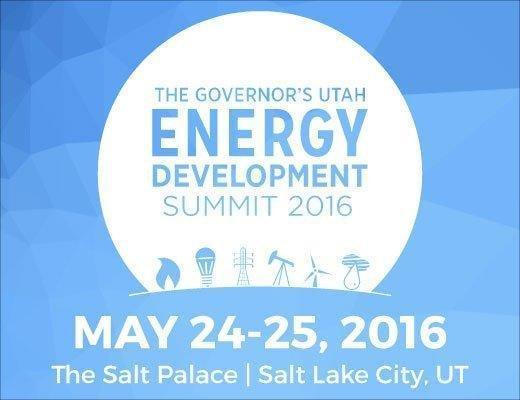Written by Chad Greenhalgh
The fifth annual Governor’s Utah Energy Development Summit took place last week in Salt Lake City at the Salt Palace Convention Center.
The summit serves as a meeting and display case for businesses, provides education opportunities, and helps shed light on energy regulations and policy options.
Carbon, Emery, and Uintah counties are large players in Utah’s energy market, and each were highlighted on more than one occasion. Governor Gary Herbert and Lieutenant Governor Spencer Cox both spoke to their concern for rural Utah economies despite the fact that the Wasatch Front has been leading the nation in economic growth nine out of the past 12 months.
Speaking of Carbon and Emery counties in particular, Governor Herbert said that energy is a main economic driver in rural Utah and therefore “the ups and downs, the booms and busts of energy has a significant impact positively and negatively to the economy in rural parts of Utah.” Herbert spoke about the need to diversify but that energy would always be a key part of the economy of rural Utah.
In response of clean energy and non-sensible regulations, Governor Herbert pointed out that “our sage grouse population has increased over the last two or three years by 40%.” And yet Utah’s sage grouse plan has not been adopted by the federal government. It is felt by Governor Herbert that the reason has little to do with the sage grouse but that there is an “underlying motivation” to stop production on public lands.
“It has nothing to do with the bird; it has to do with giving energy the bird!” he said to a cheering audience.
During the summit a local county advocate asked Cindy Crane, President and CEO of Rocky Mountain Power, what she thought Rocky Mountain Power would do with the existing utility infrastructure if the coal-fired power plants were to be shut down. She offered encouragement as she informed audience members that these types of issues are very carefully thought out from all perspectives and that their first choice would likely be to retrofit the existing facilities to generate power utilizing an alternative resource. The second choice, according to Crane, would be to build a new power facility adjacent the location of the existing plant(s) so that the existing infrastructure could be utilized as much as possible.
An advocate of rural Utah, Lieutenant Governor Cox paid tribute to those working and making decisions in past energy fields, as he believes that these people have made it possible for Utah to be experiencing the growth that it currently enjoys.
“I pay tribute to the men and women who have sacrificed their lives in those dark coal mines, risked their safety…so that we can have the economy that we have, so that we can have the prosperity that we have in the state of Utah,” he said. “I want to make sure that in all of this transitioning we don’t want to forget the actual people on whose backs and shoulders we built this great economy.”
Cox went on to sympathize with rural Utah and how it will be more difficult in the rural parts of the state when economic turns and transitions take place. But he said by sticking to the principles that got us where we are, reviewing the data carefully and making correct decisions, we will succeed and move forward.


